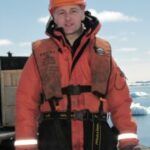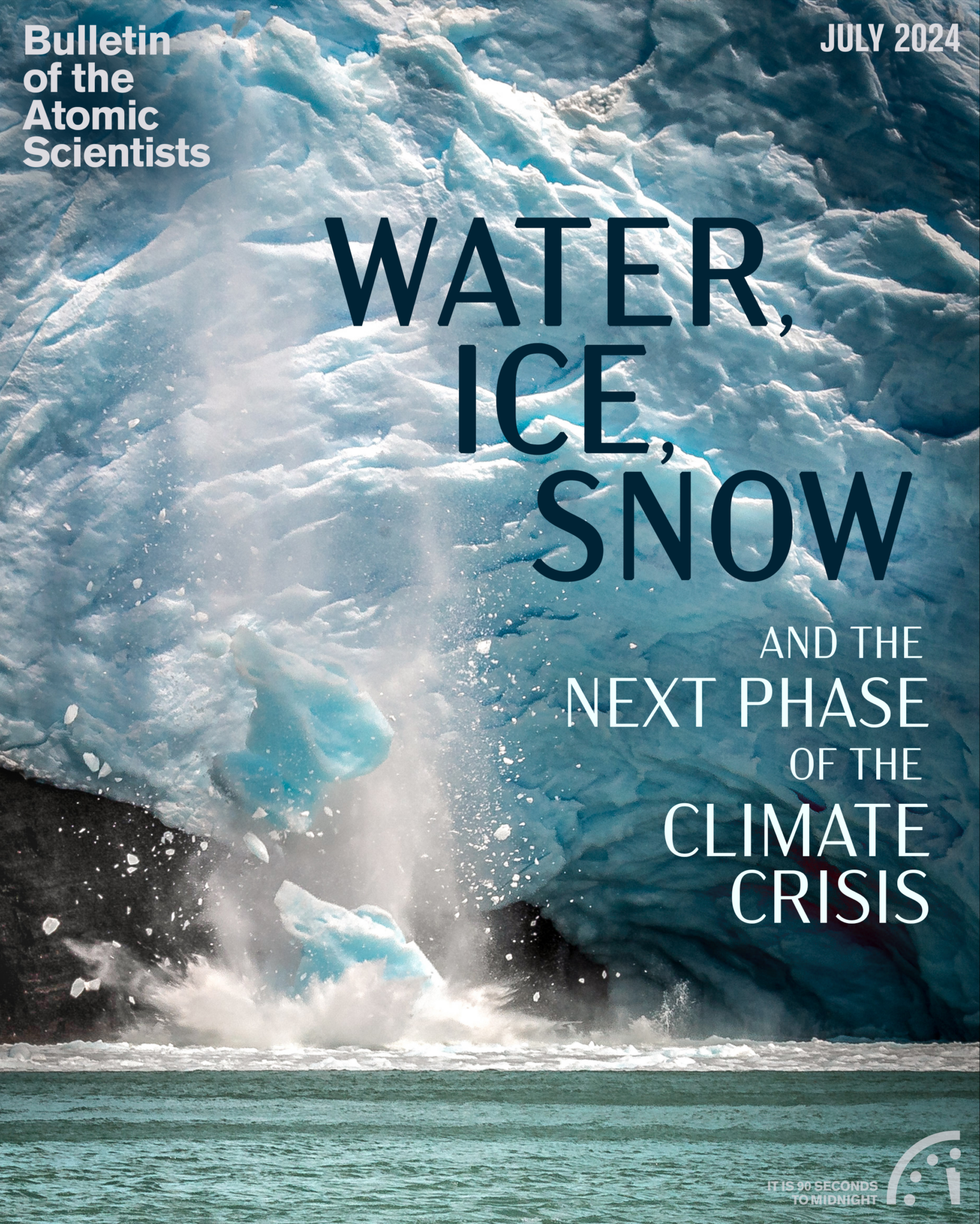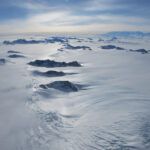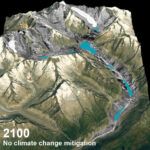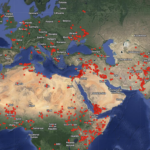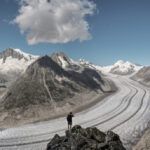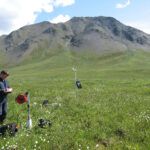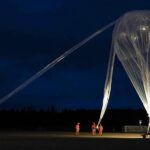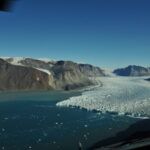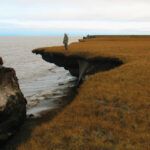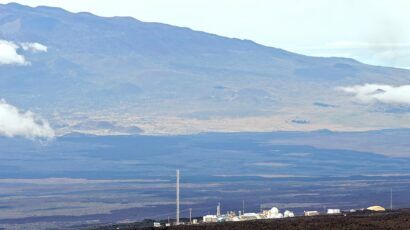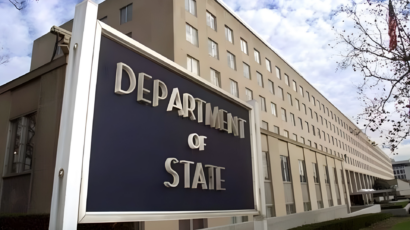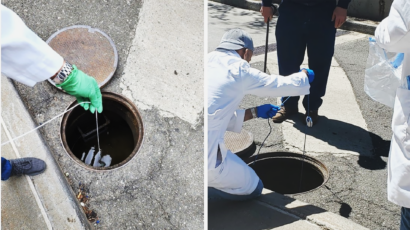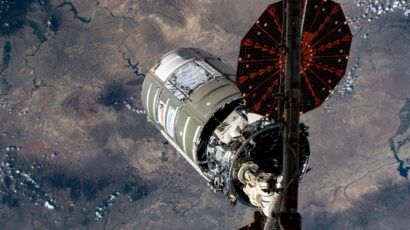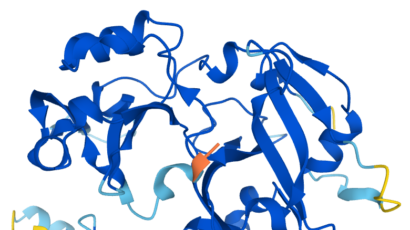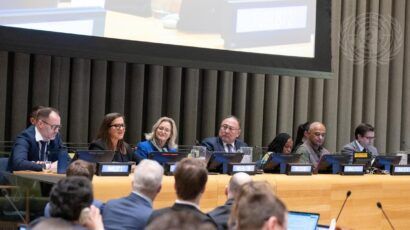When glaciers calve: Huge underwater tsunamis found at edge of Antarctica, likely affecting ice melt
By Michael Meredith | July 15, 2024
When glaciers calve: Huge underwater tsunamis found at edge of Antarctica, likely affecting ice melt
By Michael Meredith | July 15, 2024
Antarctica is huge, it affects pretty much every place and every living thing on our planet, and it is changing. This should be a concern for all of us, and yet we know troublingly little about some key aspects of the great white continent.
Despite its position in the far distant south, Antarctica is a vital component in the functioning of the planet. It is central to global ocean circulation, thus exerting a profound influence on the world’s climate (Figure 1). The vast Southern Ocean that surrounds Antarctica absorbs huge quantities of heat and carbon dioxide from the atmosphere and distributes them around the rest of the world, thereby slowing the rate of global warming elsewhere. This “climate favor” has comes at a cost, however—the Southern Ocean is overheating and acidifying, with marked impacts on the marine ecosystem. The extra heat in the ocean is also melting the fringes of the Antarctic Ice Sheet, destabilizing its glaciers, and increasingly pushing up sea levels worldwide. The sea ice around Antarctica—formed in the fall and winter of the Southern Hemisphere, when the ocean surface freezes—has now reached record low extents, affecting the Earth’s energy budget and acting to further accelerate climate change.
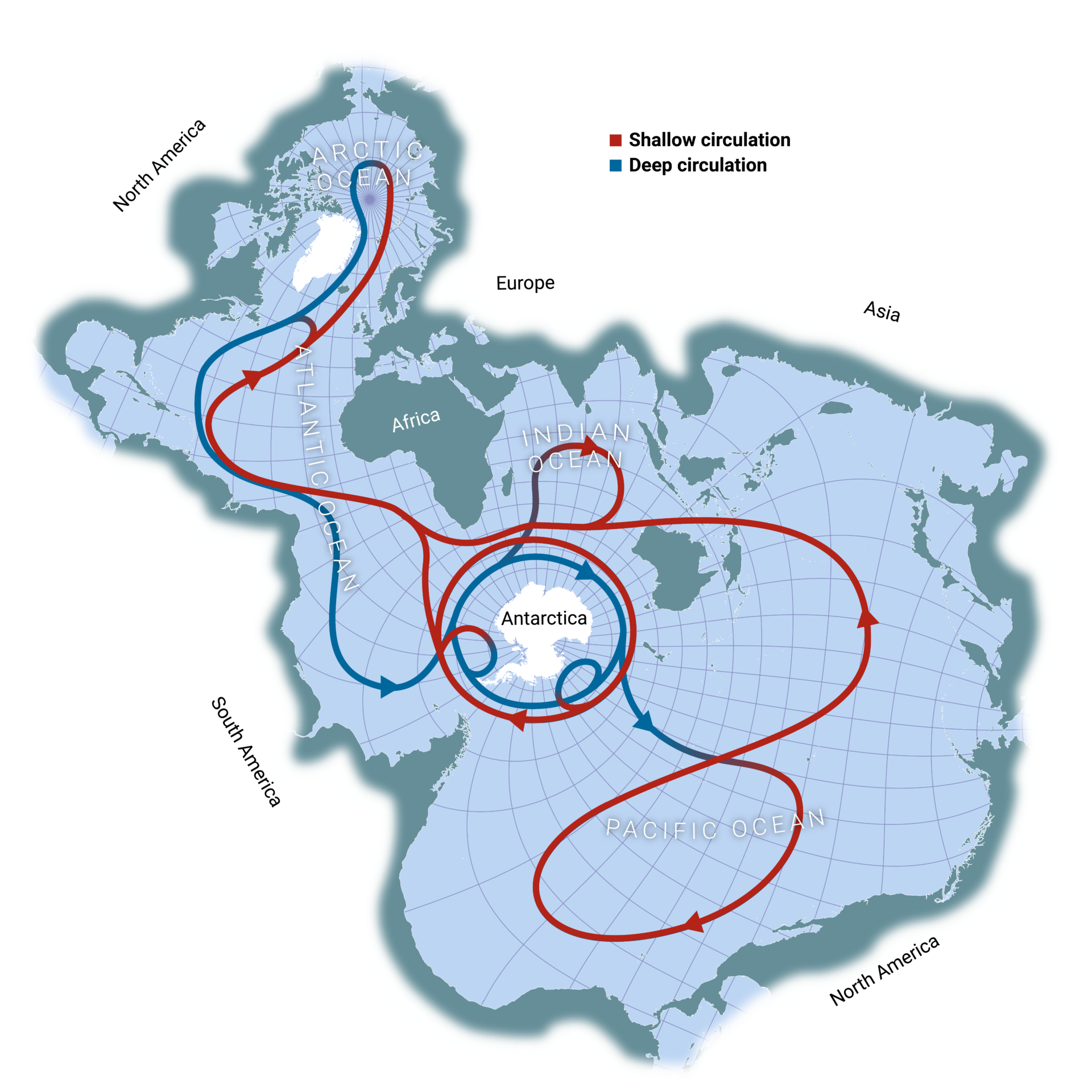
All the information we have from Antarctica comes from sparse networks of sensors and equipment deployed directly, augmented with satellite measurements of the ice and ocean surface and computer simulations. While we know more about Antarctica and the Southern Ocean than ever before, it is still one of the least-well measured places on our planet, with some areas still remaining “data deserts.” We need to know more, so that we can better understand the causes of the changes happening here, how they will continue to change in future, and hence what the global impacts are likely to be.
One feature of the Southern Ocean that is often overlooked is how (and how strongly) it is mixed. This is a key process that redistributes heat, carbon, nutrients, plankton, and all other things in the sea, with profound consequences. However, mixing cannot be measured well by satellite and is very challenging to measure in situ, so our understanding of it has lagged behind other processes. For decades, we assumed that the major causes of ocean mixing around Antarctica are the wind, tides, and cooling at the surface—just like the ocean in most other places, in fact.
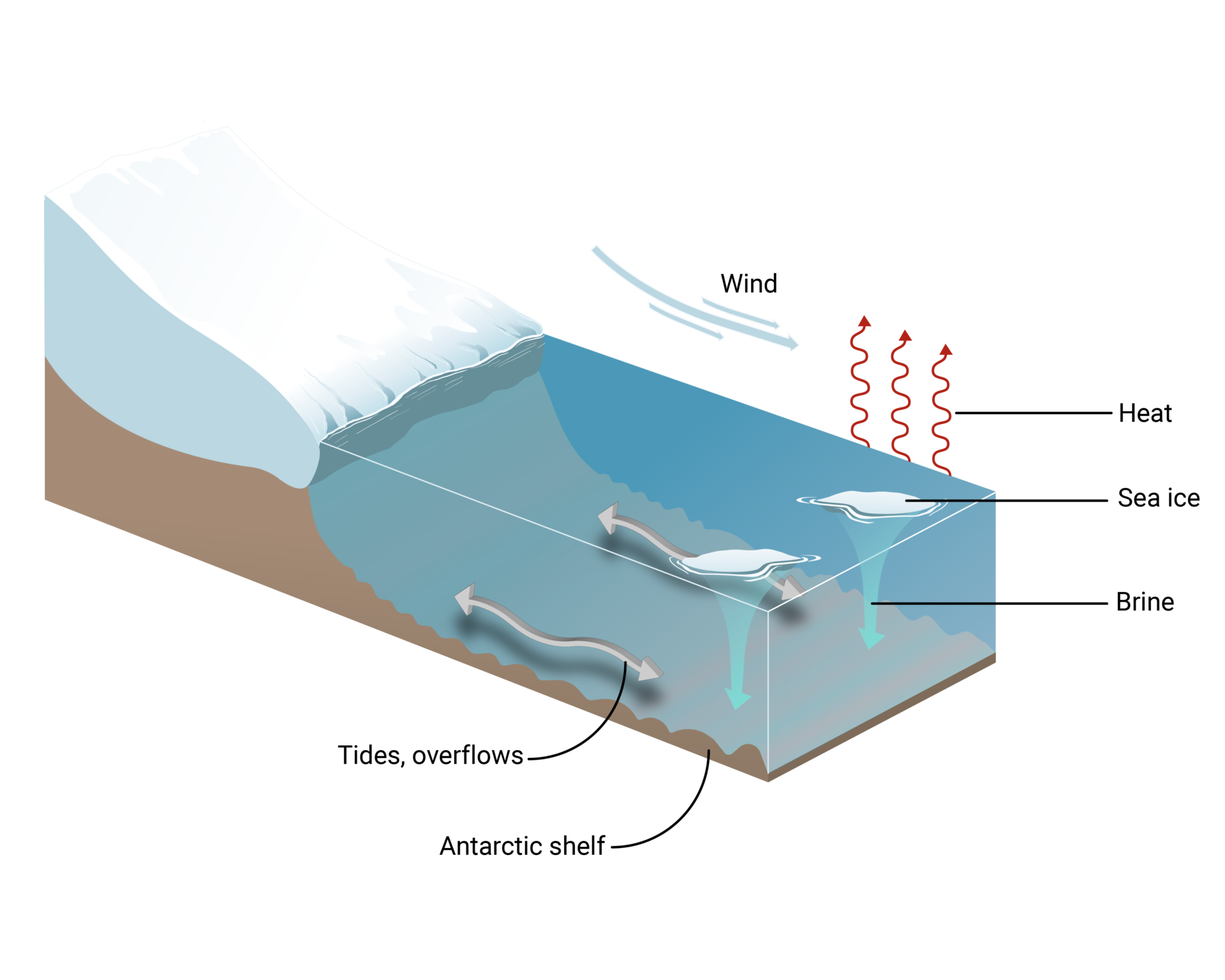
That changed in 2020. Just as the pandemic was beginning its terrible spread around the world, we were conducting an expedition from a research vessel in Antarctica and were treated to the spectacle of a large glacier calving event. In essence, the event was the disintegration of about a kilometer of glacier front (about six-tenths of a mile), with the ice tumbling into the sea from heights of up to 40 meters (roughly 130 feet) or more. It was dramatic to witness, but scientifically the impact on the ocean was even more profound. Upon examining the data we collected, we realized that the glacier calving event had caused a sudden massive burst in the mixing of the ocean, stretching many kilometers from the ice front.
How did it do this? The data revealed that the glacier calving had triggered an underwater tsunami event. In essence, large waves (the height of a two-story house) were generated and moved rapidly away from the glacier, riding the interface between layers in the ocean that were tens of meters down. When these internal tsunami waves finally broke—like surface waves on a beach—they caused massive churn and mixing.
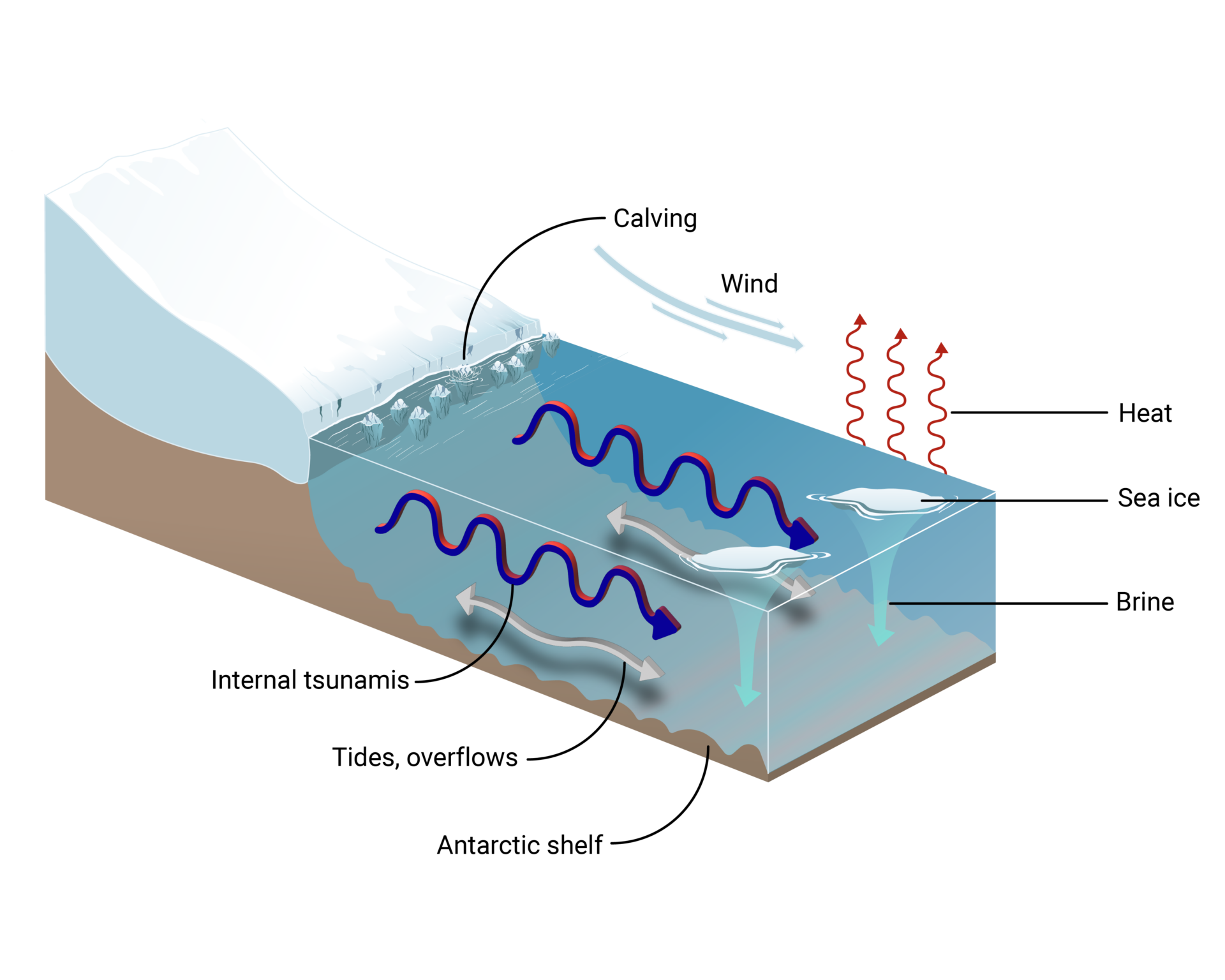
Why does this matter? For one thing, while such calving events are rare for humans to see in-person, they are actually quite widespread and frequent. There are around 3,000 glaciers around Antarctica as a whole and thousands more around the Arctic, Greenland, Alaska, Russia, and elsewhere. Many of them calve quite regularly and have the potential to trigger internal tsunami waves like the one we saw.
The impact of the mixing from these breaking internal tsunamis is remarkably strong. While their production is intermittent, of course, just a couple of events per glacier per year would put more mixing energy into the ocean than tides or winds—and from satellite measurements, we know that this frequency of glacier calving does happen.
Finally, this extra mixing is likely to change substantially as climate change progresses. Glaciers are susceptible to warming of the atmosphere and ocean, and it is highly likely that the frequency of glacier calving will increase in the coming decades—so we expect to see changes in the strength of ocean mixing as a consequence. Of course, glaciers that retreat very strongly will ultimately have their snouts over land instead of in the sea, and at that point any calving of that glacier will cease to affect mixing of the ocean. So understanding the future evolution of glaciers, and especially their transition to becoming entirely land-based, is a key priority.
This process—of glacier calving generating internal tsunamis and bursts of ocean mixing—is entirely absent from the computer models that are used to simulate our climate and ecosystem, hampering our ability to reliably project future changes. We need to know more about how this process works, how it will change, and what its consequences will be. This will require dedicated new fieldwork—our discovery was serendipitous and based on short-term measurements, and far more detailed information is now required. It will also require analysis of extensive satellite data, to span the huge spatial scales we are dealing with, and advances in computer simulation to feed the new knowledge into schemes better able to predict the future.
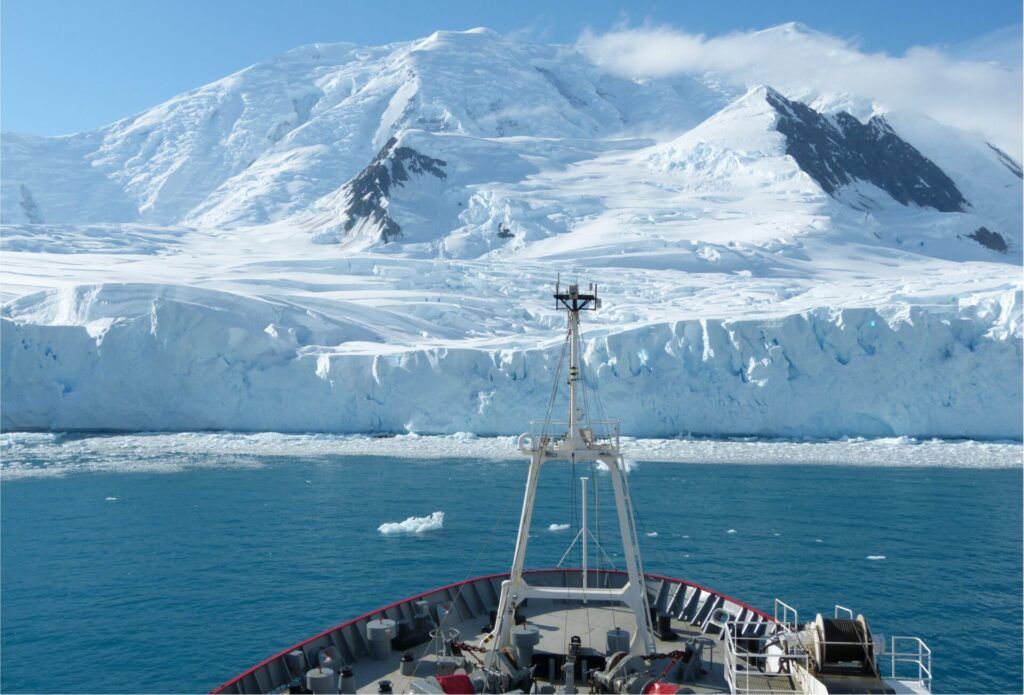
This new science has highlighted that our knowledge of Antarctica, and how it influences the rest of the world, is still very incomplete. For scientists, it is an exciting new development that will allow us to enhance knowledge of important climatically- and ecologically-important processes. But above all, it does emphasize that Antarctica is a place where new discoveries are waiting to be made, and there is no substitute for going there in-person to make them.
Funding
The science summarized here was funded by the Natural Environment Research Council and CONICYT, and was reported in Meredith, M.P., et al. “Internal tsunamigenesis and ocean mixing driven by glacier calving in Antarctica.” Science Advances, 8, 47, 10.1126/sciadv.add0720, 2022.
Acknowledgments
The author extends thanks to all those who contributed to fieldwork, data collection, analyses and interpretation as part of the research.
Together, we make the world safer.
The Bulletin elevates expert voices above the noise. But as an independent nonprofit organization, our operations depend on the support of readers like you. Help us continue to deliver quality journalism that holds leaders accountable. Your support of our work at any level is important. In return, we promise our coverage will be understandable, influential, vigilant, solution-oriented, and fair-minded. Together we can make a difference.
Keywords: Antarctica, climate, glacier calving, marine life, ocean mixing, underwater tsunami
Topics: Climate Change
